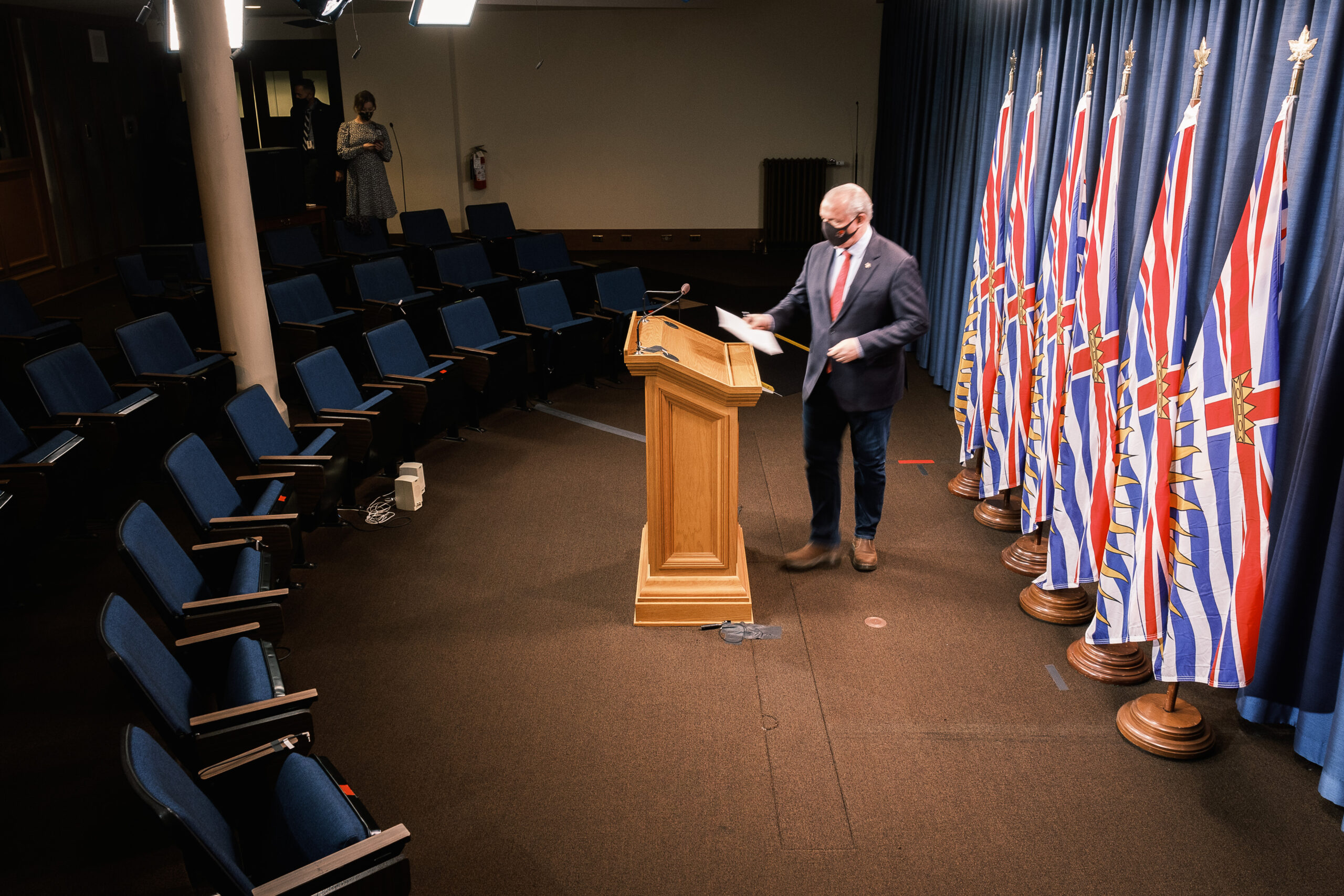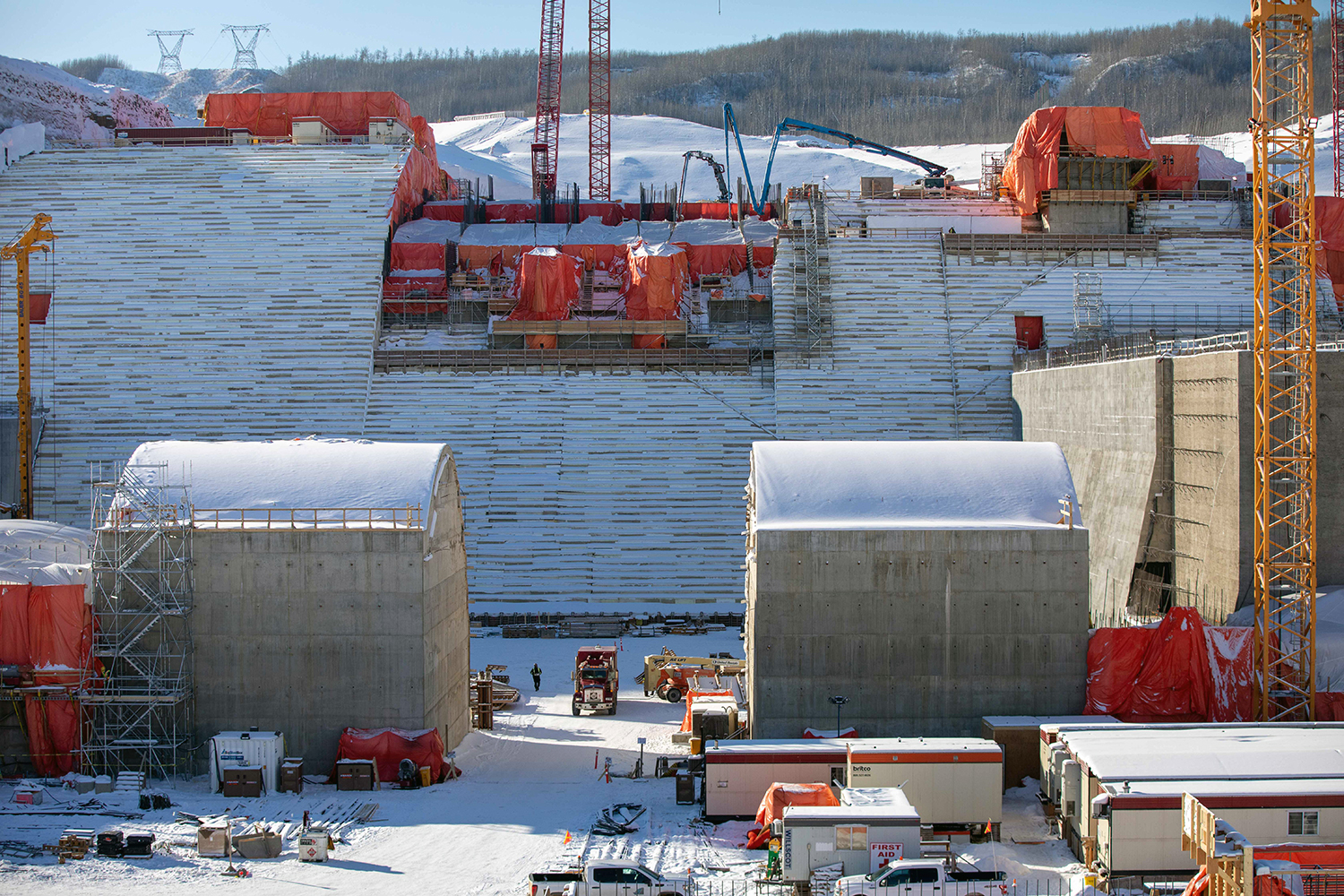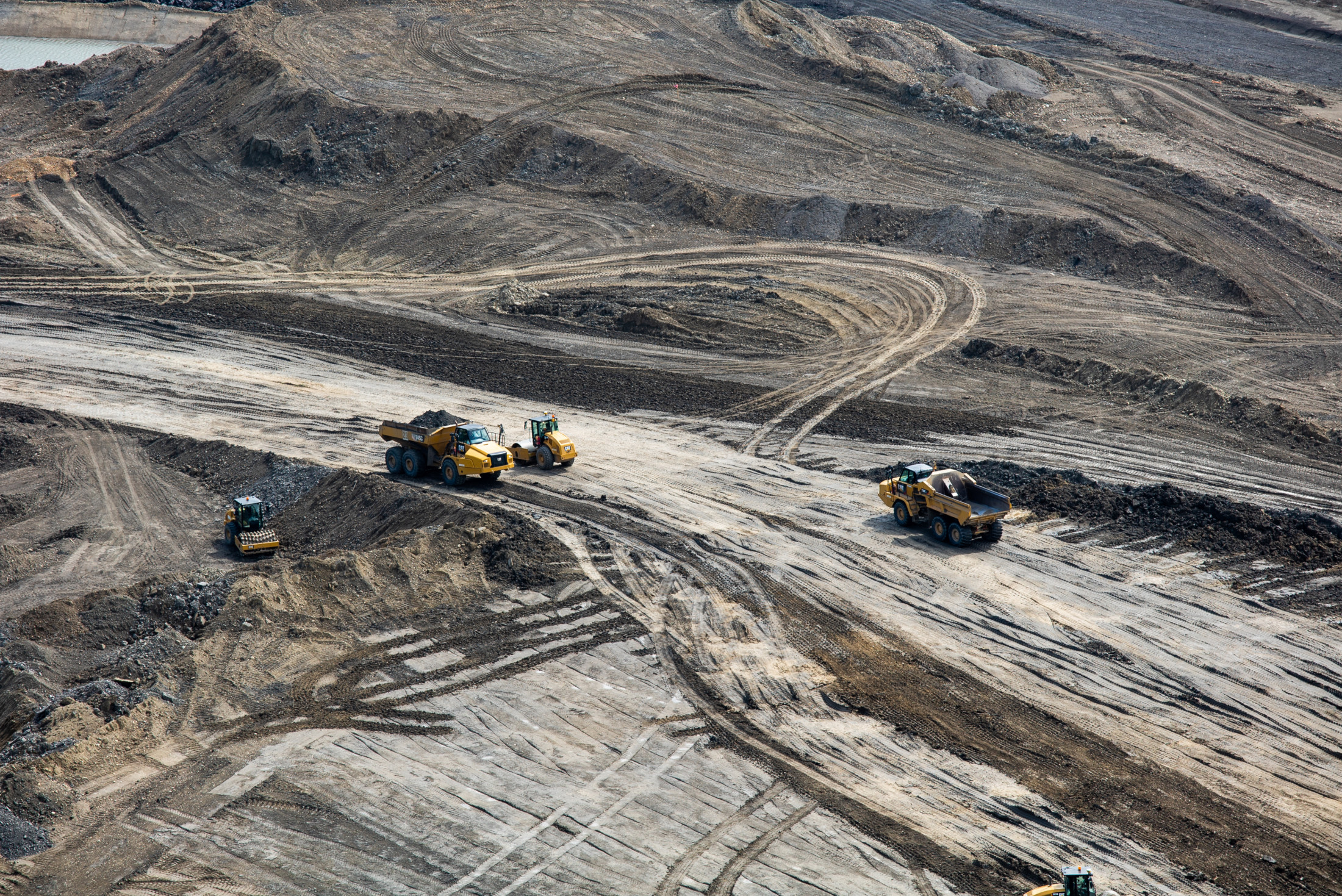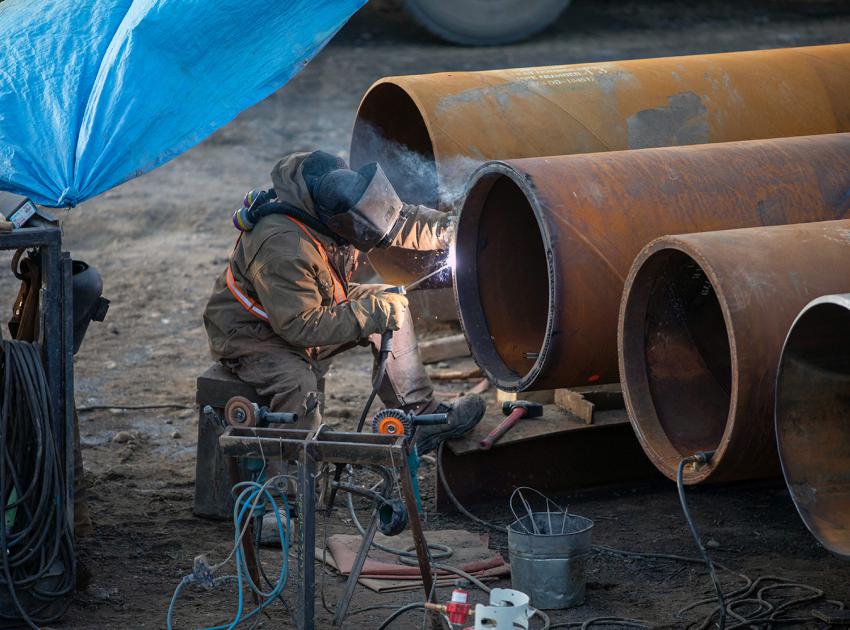
Ontario’s public service heads back to the office, meaning more traffic and emissions
For 15 years and counting, my commute from Mississauga to Toronto has been mired by...
For seven months, there was silence.
Then, on Feb. 26, the B.C. government released a barrage of information about the Site C dam’s stability issues and dropped a financial bombshell.
The dam, announced in 2010 as a $6.6 billion project, will now cost $16 billion to complete.
That makes Site C the most expensive dam in Canadian history — and nowhere near the biggest. Not even close.
For that amount of money, British Columbians could pay for four-and-a-half NASA Perseverance rover missions to Mars, in greenbacks.
Premier John Horgan didn’t rule out further cost increases, given that almost five years of construction remain and new geotechnical issues could emerge because the dam is being built on shale (think of compressed mud).
Lost in the hailstorm of information released on Feb. 26 were some intriguing details in a long-awaited report on the dam from former deputy finance minister Peter Milburn.
Milburn pointed to serious gaps in oversight for the project, which international hydro expert Harvey Elwin says is the most secretive he has encountered during five decades working on large hydro projects around the world, including in China.
Spoiler alert: Milburn revealed that BC Hydro tried to fire its independent oversight adviser, Ernst & Young, after the firm wrote a report “identifying many deficiencies” in BC Hydro’s systems and flagged the project’s growing risk.
Read on as we dive into the contents of the Milburn report and the government’s claim it had no choice but to continue building the Site C dam.
Horgan said cancelling the Site C project would “shock” people’s hydro bills “with a rapid increase in rates.”
The project’s sunk costs would automatically have to be paid off by ratepayers over a 10-year period, the premier said.
That would result in an average annual increase of $216 for residential customers, Horgan said, or $18 a month.
B.C. Energy Minister Bruce Ralston told reporters that the dam’s sunk costs would have to be taken on immediately by taxpayers or ratepayers.
“In either case, the impacts would be severe and would deal a crippling blow to people and to BC Hydro when we are trying to build back lives and businesses from the impacts of the pandemic.”
But U.S. energy economist Robert McCullough told The Narwhal that the government pulled the 10-year figure out of thin air.
McCullough said there’s no requirement — in B.C., or anywhere else in North America — for the money to be recovered over one decade.
Sunk costs could be paid off over 30 years or longer, meaning that an increase in hydro rates would hardly be noticed, said McCullough, who provided expert advice on the Site C project to the newly appointed NDP provincial cabinet in 2017.
Normally, a decision about the best way to pay for a Site C dam write-off — without unduly affecting ratepayers — would be made by the watchdog B.C. Utilities Commission (BCUC), which looks out for the public interest.
But the previous BC Liberal government, determined to push ahead with construction of the dam, changed the law to strip the independent commission from Site C project oversight. The NDP has not restored that oversight.

Premier John Horgan at a January media availability. Horgan surprised reporters with the news that the government had commissioned two international dam safety experts to review BC Hydro’s proposed “fix” for the Site C dam’s weak foundation. Photo: Province of B.C. / Flickr
“Given the scale of the mismanagement to date, a financially prudent government would refer the issue of cost of cancellation and repayment of outstanding debt to the independent B.C. Utilities Commission for expedited review,” McCullough wrote in a March 1 report for the Peace Valley Landowner Association, representing property owners who will be affected by the Site C dam.
In an interview with The Narwhal, B.C. Utilities Commission chair and CEO David Morton confirmed there are no rules that would require Site C sunk costs to be repaid within 10 years.
Had the commission been asked to find a way to minimize the impact of cancellation on ratepayers, Morton said a timeline for writing off the debt would have been determined through an “open and transparent” hearing process.
All stakeholders would have had an opportunity to participate in the hearing — including BC Hydro, ratepayer associations, experts and individuals — and a determination would have been made by a panel on the basis of evidence and submissions, Morton explained.
“Processes have to be conducted in a fair manner under the principles of natural justice and under our laws around administrative fairness. Which means that all parties have an opportunity to be heard, they have an opportunity to present evidence. They have an opportunity to defend that evidence and challenge other evidence. That all takes time.”
Morton said the commission always takes certain principles into account when setting rates.
Firstly, the commission seeks to avoid or mitigate any rate shocks, he said.
A second principle is intergenerational equity. “In other words, it’s okay if you and I have to pay for costs that are incurred on our behalf even if it was a write-off. But it’s not okay to expect our children to pay, and even less fair to expect our grandchildren to pay.”
“The longer you stretch the costs, the more inequitable it is. Those would be the principles that would be looked at.”
Last July, BC Hydro revealed that the Site C dam project was facing unknown cost overruns, schedule delays and such profound geotechnical problems that its overall health was classified as “red,” meaning the project was in serious trouble.
Ralston announced the appointment of Milburn as a special Site C project advisor to examine the project and provide the government with independent advice.
Milburn, who worked with a team of eight people with expertise in major capital projects, construction management and engineering, was charged with delivering an interim report to the government within 30 days.
Milburn’s final report was dated Oct. 10, meaning that he handed it in during the provincial election campaign that began on Sept. 21.
Did the NDP government get wind of the Site C dam’s escalating price tag, through Milburn’s interim report, before it called a snap election one year ahead of the scheduled date for voters to go to the polls?
That question has still not been answered.
Only a summary of Milburn’s report was made public; the full report has not been released.

Crews pour concrete at the Site C dam construction site in February, 2021. Photo: BC Hydro
Milburn focused on four key areas of the Site C project: governance and oversight, geotechnical issues, risk, and construction supervision and claims management.
On the topic of risk, Milburn found the level of resources BC Hydro dedicated to risk management was “very inadequate.”
BC Hydro could have done a much better job anticipating risks, quantifying the range of risks, tracking the effectiveness of risk mitigation and communicating risks, Milburn found.
He said BC Hydro emphasized the significant amount of engineering studies that had been conducted and the knowledge about geotechnical issues at the site.
“These assurances, along with the low value placed on geotechnical risk, likely gave a misplaced sense of security to the recipients of this information.”
Milburn said BC Hydro should have made a greater allowance for geotechnical risk when seeking project approval from the government, especially because many Peace River area projects have experienced “unexpected geotechnical issues despite extensive investigation.”
Former BC Hydro CEO Marc Eliesen has said geotechnical concerns were a primary reason why the Site C dam was rejected in the early 1990s by BC Hydro’s board of directors.
Read more: ‘Who would feel safe?’ Site C dam concerns build in downstream communities
As the cost of the Site C project soared by $2 billion in 2017, BC Hydro pledged to improve due diligence and project controls.
It hired Ernst & Young, a multinational professional services network, to provide independent oversight.
In May 2018, Ernst & Young put together a report for Site C’s project assurance board (more on that board below), identifying “many deficiencies in BC Hydro’s systems,” according to Milburn’s report.
But then the relationship between BC Hydro and Ernst & Young deteriorated, Milburn noted.
BC Hydro said Ernst & Young was not producing enough value for money. Within a few months, BC Hydro notified Ernst & Young its contract would be terminated.
We don’t know what transpired right after that but, a short time later, BC Hydro “rescoped the contract” to lessen the firm’s role in overseeing the Site C project, according to Milburn.
“Ultimately, BC Hydro determined the amount and type of oversight they would receive from [Ernst & Young]. This appears inconsistent with the concept of independent oversight and with BC Hydro’s commitments to government,” Milburn wrote.
Ernst & Young continues to provide independent oversight but “the cooperation they receive from BC Hydro appears at times to be limited,” Milburn noted.
In late 2017, when the newly elected NDP government announced the Site C dam’s price tag had climbed by almost $2 billion, Horgan said a new project assurance board would improve governance and oversight.
The board was tasked with identifying risks and ensuring the project would be completed safely, on time and on budget.
But it turns out that BC Hydro, which proposed the idea of a project assurance board, promptly limited the board’s oversight, according to the Milburn report.
For the first eight months, the oversight board was chaired by BC Hydro board chair Ken Peterson. Then the board was chaired by John Nunn, the former chief engineer for the Site C project.
As previously reported by The Narwhal, six members of the assurance board were also BC Hydro directors. They included civil engineer John Ritchie, a former senior consultant for Hatch, an engineering and consulting firm BC Hydro hired to work on the Site C dam.
McCullough, whose testimony to a U.S. Senate Committee helped spark the criminal investigation into Enron, said having BC Hydro board members on the assurance board was “like putting the fox in with the chickens.”
“It’s simply foolish.”
Read more: The most expensive dam in Canadian history: cost of B.C.’s Site C dam balloons to $16 billion
Other assurance board members included consultant Lorne Sivertson, author of a pro-Site C report for construction trade unions that was used to discredit an independent report by the B.C. Utilities Commission, The Narwhal also previously reported.
Two top civil servants sat on the board and were charged with reporting to the government.
One was Les MacLaren, assistant deputy minister in the energy ministry, who since 2008 has been responsible for approving Site C briefing notes for ministers and conversing with ministers about the project.
The other was then-deputy finance minister Lori Wanamaker, who in 2017 challenged the BCUC’s findings about the Site C project in a six-page letter she co-wrote that seemed to suggest the newly elected NDP government was searching for a rationale to continue the project.
Wanamaker was recently promoted and is now Horgan’s deputy minister.
Milburn interviewed assurance board members, who indicated that BC Hydro did not allow the board enough opportunity to fully explore the issues and create independent recommendations. “Some PAB members felt frustrated by this process.”
“Our team recognizes that the strongest and most valuable due diligence often comes from individuals who have not been associated with the project,” Milburn wrote, recommending more external membership on the assurance board.
“Due diligence requires independence.”
The short answer? We don’t know. The government and BC Hydro haven’t disclosed details about the latest $5.3 billion in cost overruns.
“The COVID-19 pandemic has presented challenges and construction delays that we could have never foreseen,” Horgan said at the news conference.
At a technical briefing for reporters, a government spokesperson said 50 per cent of the cost overruns were caused by the pandemic and the geotechnical problems. But the spokesperson, who can’t be identified according to protocols for technical briefings, declined to break down the number any further.
The other 50 per cent of the cost overruns — the source of which has not been disclosed — has nothing to do with the pandemic or the geotechnical issues.
Some details may be revealed when BC Hydro submits overdue quarterly reports to the B.C. Utilities Commission and answers questions the commission posed last fall. Ralston said he has asked BC Hydro to provide the reports and answers, but as of press time they had not yet been submitted.

There are many unanswered questions about the reason for ballooning costs at the Site C dam project. Photo: Garth Lenz / The Narwhal
Horgan said he couldn’t justify putting thousands of people out of work if the project were cancelled.
“Cancelling Site C when it’s half done would have meant laying off 4,500 workers just as we’re coming out of the economic impact of the pandemic,” the premier told reporters.
As of March 9, there were 1,166 people staying in the Site C dam work camp. In December, the last month for which BC Hydro has reported project employment figures, there were 3,716 Site C dam workers, one-third from outside B.C. Another 712 people were employed as engineers or BC Hydro construction management and project staff.
Site C job numbers have been exaggerated by successive provincial governments. Former Premier Christy Clark repeatedly said the project would create 10,000 jobs, a figure never revised by the NDP once it came to power.
When BC Hydro considered building the Site C dam in the 1990s, it said the project would create 2,182 construction jobs. The much larger WAC Bennett dam employed 3,500 people at peak construction in the 1960s.
Horgan and Ralston did not say how many people could have been employed in clean-up and remediation had the project been cancelled.
They also did not say how many jobs could be created if the rest of the money earmarked for the Site C project was dedicated to creating jobs in cheaper and more nimble renewable energy projects and energy conservation measures such as retro-fitting buildings.
In 2017, the BCUC found that the same amount of power that will be produced by the Site C dam could be created for $8.8 billion by a suite of renewables, including wind — and the price of wind has since dropped.
Judith Sayers, Nuu-chah-nulth Tribal Council president and a board member of Clean Energy BC, said clean energy projects led by First Nations would create far more long-term jobs than the Site C dam.
“When Site C is up and running it’s 25 measly jobs and right now, those 4,000-odd workers that they’re talking about, a lot of them come from out of province. They just have work for a few years and then they’re gone.”
“It’s not the long-term employment that is needed by people to sustain their families and their homes and their communities.”

A worker prepares a pile extension as part of work at the Site C dam in February 2020. Photo: BC Hydro
Sayers pointed to the B.C. Indigenous Clean Energy Initiative, which she said has created 1,089 jobs over the past six years with approximately $3 million in annual federal and provincial funding. That work involves installing heat pumps, solar, geothermal and other climate-friendly projects in First Nations communities.
In the process, 418,000 tonnes of greenhouse gas emissions have been prevented and almost $2 million has been saved in annual energy bills, Sayers said. “This is only one small fund.”
Many First Nations communities had plans for larger clean energy projects, including wind and run of river hydro projects, that would produce energy for the grid. But those long-term projects, in every area of the province, have been mothballed due to the Site C dam, Sayers said.
“I think that the premier and his cabinet have turned a blind eye to anything else. For whatever reason, they want to build Site C. I have never understood this.”
Horgan sidestepped the question of whether B.C. needs power from the Site C dam, telling reporters the province needs “to get this asset built to benefit future generations.”
A joint review panel that examined the Site C project for the provincial and federal governments found B.C. didn’t need the power in the time frame presented by BC Hydro.
The BCUC, in a fast-tracked 2017 economic review of the Site C project, found BC Hydro has a historical pattern of over-estimating energy demand. Even with the electrification of the province, the commission said BC Hydro’s mid-load estimate of energy demand was “excessively optimistic.”
Despite a fast-growing population, B.C.’s energy demand has been stagnant since 2005, and recent mill closures have freed up even more electricity.
Power from the Site C dam can be sold to the U.S., but at a huge loss.
The going rate for electricity exports is currently about $37 per megawatt hour while Site C’s power will now cost about $135 per megawatt hour, according to McCullough’s report, meaning B.C. would lose 72 cents on every dollar of Site C power it exports.
When the Site C dam’s price tag was $7.9 billion, BC Hydro told the joint review panel the energy would cost $83 per megawatt hour.
About $6 billion has been spent on the Site C project so far, with $10 billion to go.
Horgan said cancelling the dam would cost $10.2 billion, with nothing to show for it.
But the government has not presented a detailed breakdown and justification for the $10.2 billion cancellation cost estimate, or any potential mitigation strategies to reduce that cost, McCullough pointed out. He called the government’s focus on sunk costs, rather than costs still to come, “a failing grade in economics 102.”
“It is completely inappropriate for them to be saying ‘well, we’ve spent a lot of money so we’ll keep on going.’”
“The fact is any economist, any accountant, any financial expert, including Moody’s, will tell you that the money is spent, it’s gone, it has no impact on our future economic decisions.”
Milburn made 17 recommendations to improve commercial and risk management and project oversight.
All of the recommendations have been accepted by the government, said Ralston, who called Milburn’s report a “path forward to complete Site C.”
One potential wildcard is uncertainty about geotechnical conditions below the dam structure, where excavations haven’t taken place — a potential issue flagged by two independent safety experts who recently approved BC Hydro’s proposed fix to existing geotechnical issues related to the project’s weak foundation.
In his report, Milburn said it was important to note “the risk of additional geotechnical issues on this project continues at the time of writing.”
Another wildcard is the landmark Treaty Rights case brought by West Moberly First Nations, alleging that the Site C dam and two previous dams on the Peace River constitute an unjustifiable infringement of Treaty Rights. The trial begins in March 2022 and is expected to last about six months.
Enbridge Gas will face Waterloo Region in a hearing before the Ontario Energy Board to renew an agreement that would allow the company to continue...
Continue reading
For 15 years and counting, my commute from Mississauga to Toronto has been mired by...

For our last weekly newsletter of the year, we wanted to share some highlights from...

The fossil fuel giant says its agreement to build pipelines without paying for the right...